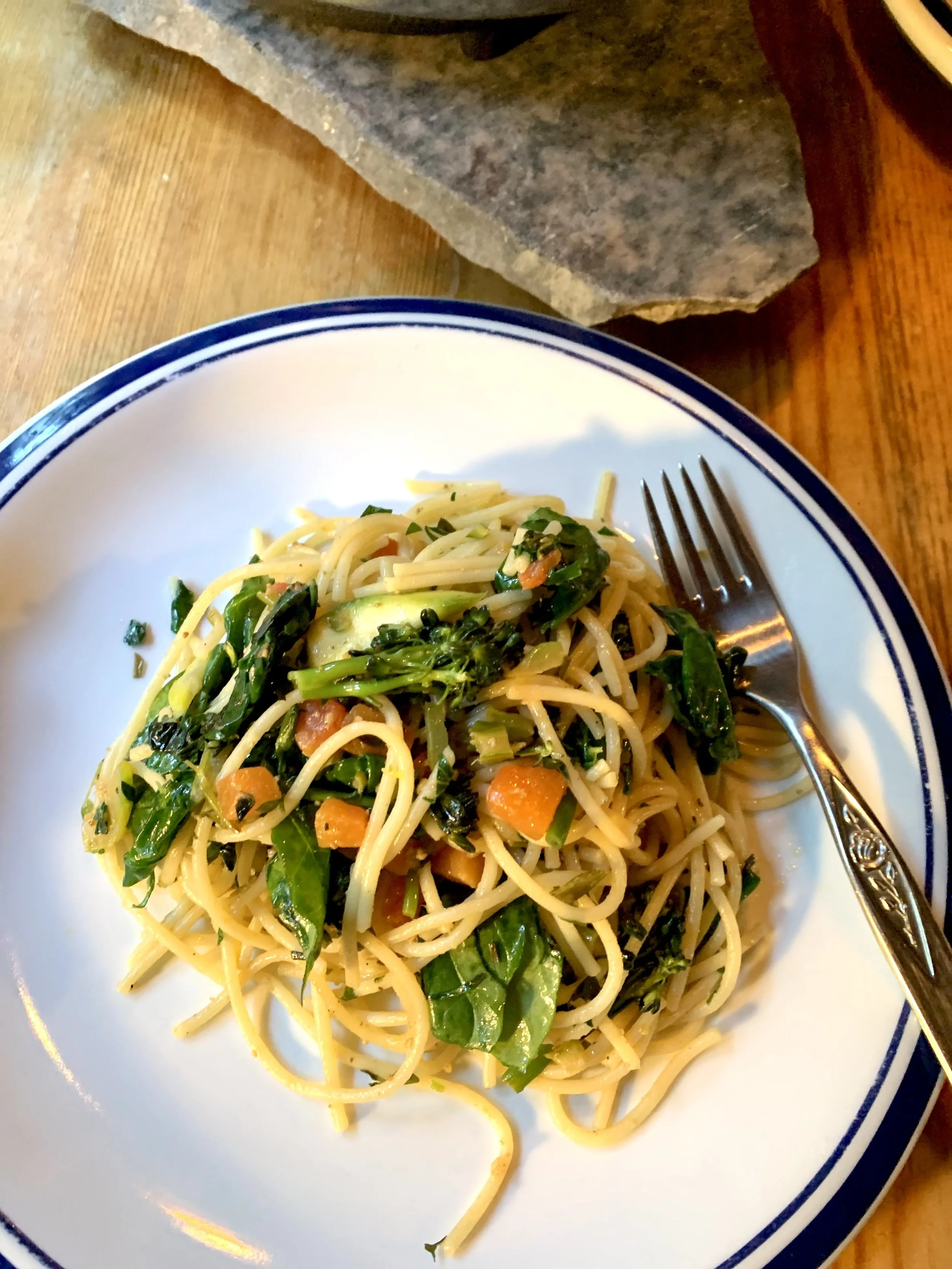Summer Papaya Primavera Pasta
WELCOME TO MY BLOG! I’M EVANGELINE & A MOM. ALSO, AN RMT, and AYURVEDA-YOGA COUNSELLOR. I STARTED MY BLOG DURING COVID TO STAY CONNECTED TO MY CLIENTS AND SHARE MY LOVE OF COOKING HEALTHY, AYURVEDIC MEALS.
AYURVEDIC COOKING TAKES A BALANCED, HEALING APPROACH FOR YOUR DAILY COOKING NEEDS. YOU WILL FIND SIMPLE, EASY TO MAKE NOURISHING MEALS I HAVE MADE FOR MY FAMILY, WITH A DOSE OF AYURVEDA & YOGA WISDOM.
Updated July 9, 2024
Summer is right around the corner! This pasta is balancing for pitta dosha with cooling elements from zucchini, rose petals, rosemary, cardamom, fennel and coriander, and supports digestion with the inclusion of papaya. Yes papaya in a pasta dish, and it’s absolutely delicious! Did you know papaya (and pineapple), both being high in enzymes, are the two fruits that can be eaten combined with other foods without creating adverse metabolic effects? Otherwise, as Ayurveda recognizes, raw fruits best eaten on their own, and ideally when your digestion is at its strongest, roughly between 10am - 2pm. That’s because raw fruit naturally contain a lot of water (soma energy), and needs a good strong digestive fire to fully digest it, and during that time frame, your digestive fire is stronger than other times in the day, peaking at noon time. With much research on circadian rhythm nowadays, it would not be surprising if more research will verify the energetics of timing and incompatible food combinations much discussed in Ayurveda.
So in this pasta dish, papaya makes an appearance, and its mild sweet taste is not overwhelming, and balances the greens. Leafy greens, brassica vegetables (broccoli, cauliflower, kale, Brussels sprouts, cabbage, collard greens) have an astringent taste and pacifying for pitta dosha. Papaya also adds another burst of colour, perfect this time of the year.
I also found that papaya in this recipe, appear to look like cubed tomatoes and bell peppers. If you follow my blog, you may notice, I avoid the nightshade group of vegetables because they have this property of being able to shrink our physical channels as recognized in Shaka Vansiya Ayurveda. This is due compounds such as solanine found in nightshades. Solanine belongs in the same family as nicotine found in cigarettes. Eliminating nightshades can be difficult as nightshades are so prevalent this day and age and incorporated in just about every cuisine, plus modern science point to their nutritional benefits. Having said this, the ancient sages who cognized Ayurveda understood food and their effects on the body on a deep level, and gradually what they have said and written in the ancient texts of Ayurveda, pop up in research nowadays verifying their truths. For example, the ancient doctors understood that food needed to be cooked, otherwise they disturb our gut. These compounds have now been identified, such as lectins, phytic acid, oxalic acid, goitrogens, which have been dubbed as “anti-nutrients” because they interfere with nutrient absorption when eaten raw, or not prepared and cooked properly. Another note is that in Ayurveda, food is classified into two main categories, foods to be eaten regularly and medicinal foods. I tell my clients to do the best they can if they are leaning towards avoiding nightshades. There are substitutes you can use, like here papaya instead of tomatoes or bell peppers; I have used tamarind instead of tomatoes because of its sweet and sour taste, or I make it into a chutney to add as a topping on some dishes. My friends at Chandika make a delicious Tamarind Wild Amla Chutney!
Because arthritic conditions, and other health conditions run in my family, I avoid nightshades to keep my arteries and vessels clear and open for good circulation. In general, we must all keep our channels healthy. Have a listen to Marianne Teitelbaum’s video on how to improve poor circulation. Nightshade vegetables include potatoes, tomatoes, bell peppers and eggplant.
Summer Papaya Primavera Pasta
Yields: 2 - 3 servings
Prep Time: 10 minutes
Cooking Time: 20 minutes
ingredients
150 grams quinoa-rice or durum wheat spaghetti (I used both, not having enough quinoa-rice spaghetti on hand.)
1 tsp ghee or olive oil - to get the herbs and spices going
2 Tablespoons olive oil
1 ½ tsps Summer Spice Mix
1 ½ Tablespoons rosemary or 1 - 1 ½ tsp dried
1 Tablespoon thyme or 1 tsp dried
⅛ tsp Thai green chili (optional)
1 small bunch baby broccoli - stems cut in small pieces
1 medium zucchini
1 cup of cubed papaya - about 1 inch thick centre slice, skin and seeds removed
1 cup heaping packed spinach
1 tsp Soma salt or natural salt
Summer Spice Mix Recipe
3 tsps fennel seeds
3 tsps coriander seeds
½ tsp cardamom seeds (about 6 cardamom pods)
2 cloves
1 small rosehip
½ tsp rose petals
¼ tsp cumin seeds
¼ tsp kalunji seeds (optional)
Grind all together. Store in a glass jar away from heat and sunlight.
INSTRUCTIONS
Boil water and follow instructions to cook pasta.
While pasta is being made, prepare vegetables herbs and spices.
In a medium to large pan, heat the ghee or olive oil in medium-low heat and add spices and broccoli stems, cut in small pieces. Combine all together.
Add broccoli and zucchini, and turn heat up to medium, and combine all together, then cover with a lid to cook for a couple of minutes.
Toss in papaya to soften for a few minutes, covered with a lid.
Add olive oil and combine. At this point, your pasta should be ready. Strain and set aside.
Toss in pasta and spinach combine all together.
Serve immediately if you are using quinoa-rice pasta. Add your favourite toppings, like toasted pine nuts or cashews, or your favourite cheese.
Enjoy!
Ayurvedic Profile of Spices
Black peppercorn - heating, opens up channels
Cardamom - cooling quality; helps with protein metabolism
Cloves - opens up the channels without aggravating pitta dosha
Coriander - cooling, binds toxins and ushers them to the urinary channels
Cumin - aids in digestion and absorption of nutrients
Fennel - balancing effect on digestion, balances heat of pitta dosha
Kalunji - helps cool body heat, balancing effect on hormones
Rosehip - cooling, pacifies sadhaka pitta and opens the heart lotus
Rosemary - cooling, pacifies the heart; “antimicrobial, anti-inflammatory, anti-oxidant, anti-apoptotic, anti-tumorigenic, antinociceptive, and neuroprotective properties”; helps with pain, anxiety, sleep, depression, mood, cognitive function and nervous system disorders
Rose petals - pacifies sadhaka pitta; cooling to the body, and soothes the heart and mind
Thyme - heating, anti-oxidant, anti-viral, anti-bacterial and anti-fungal properties
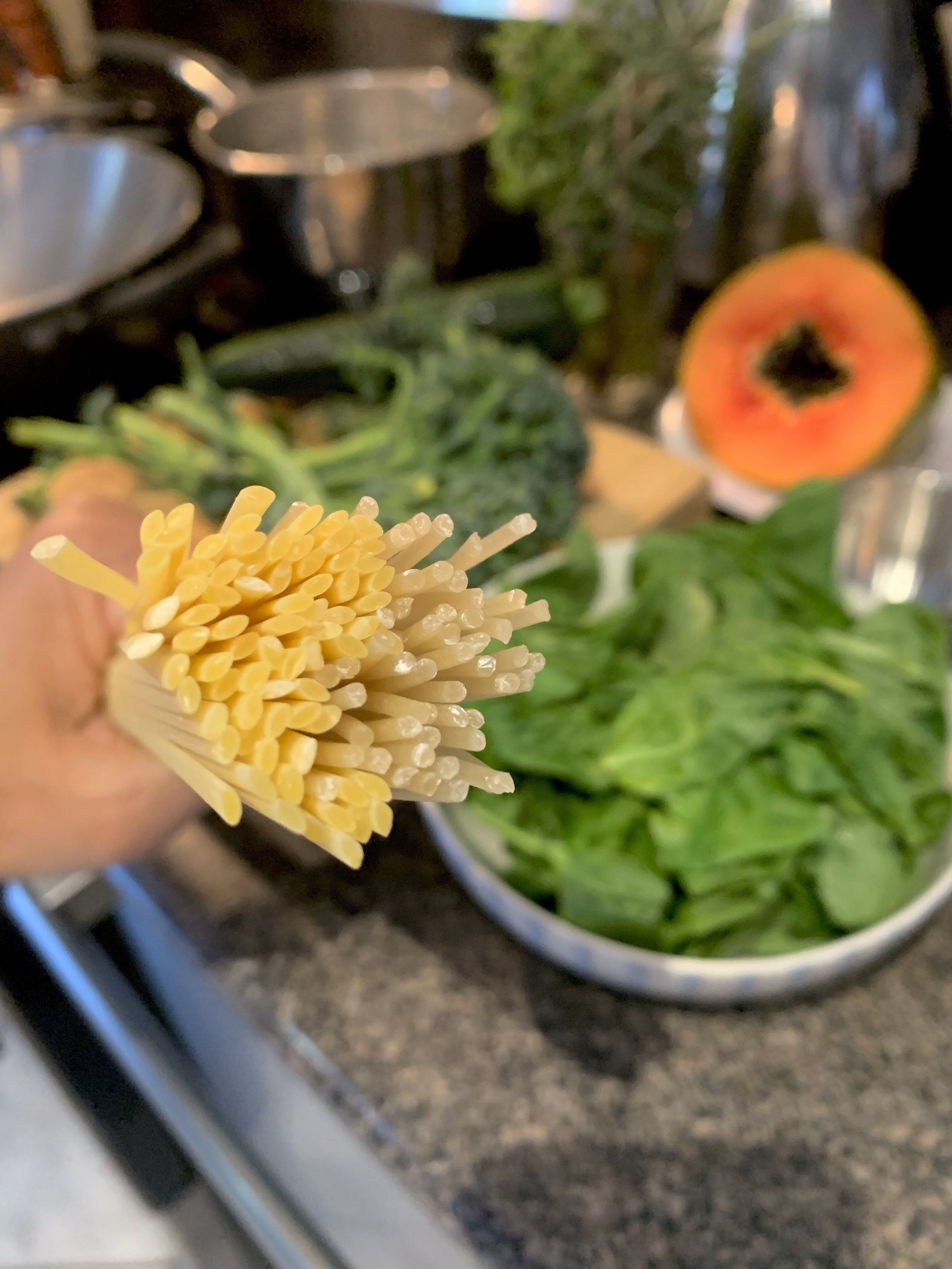
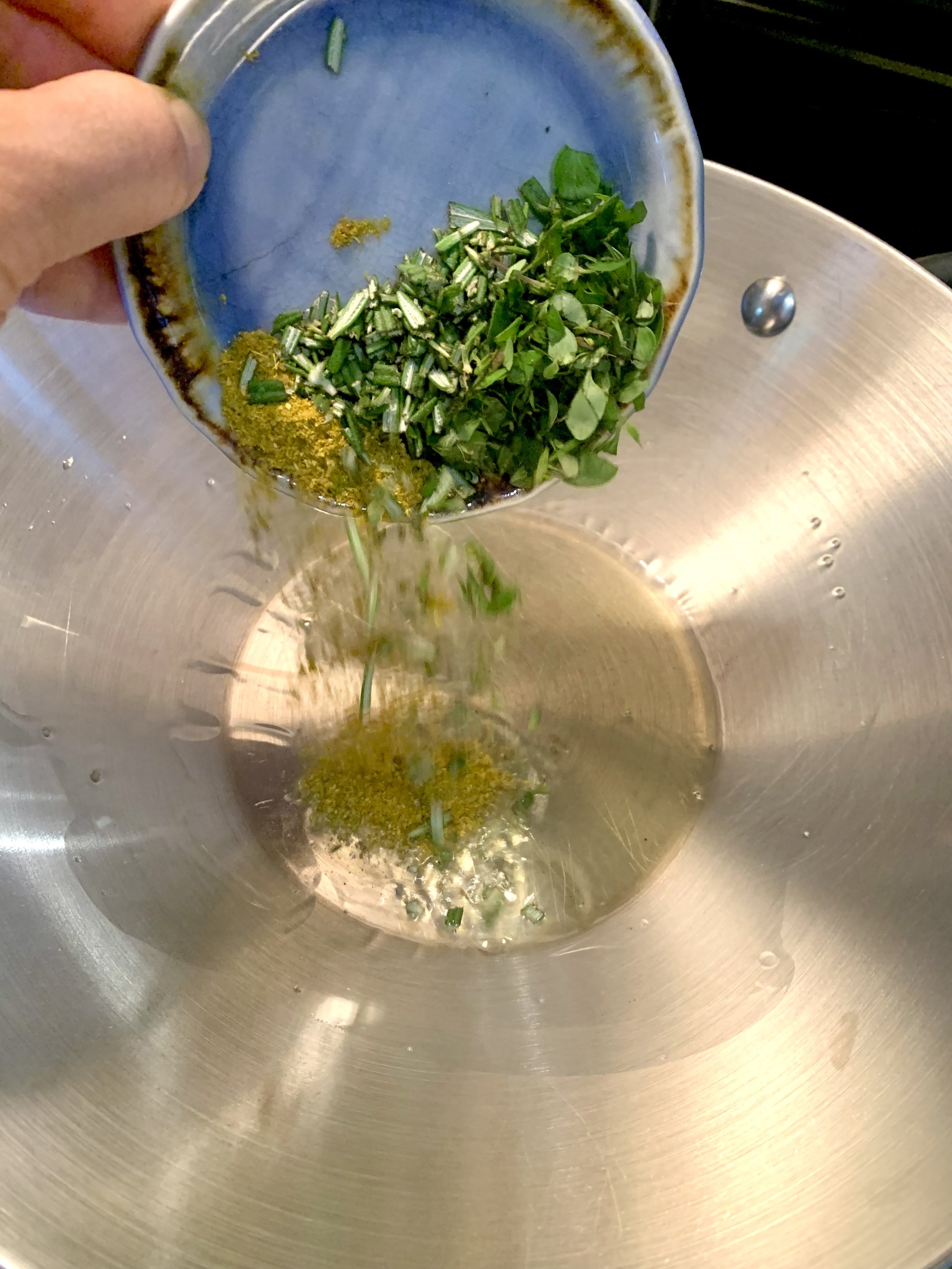
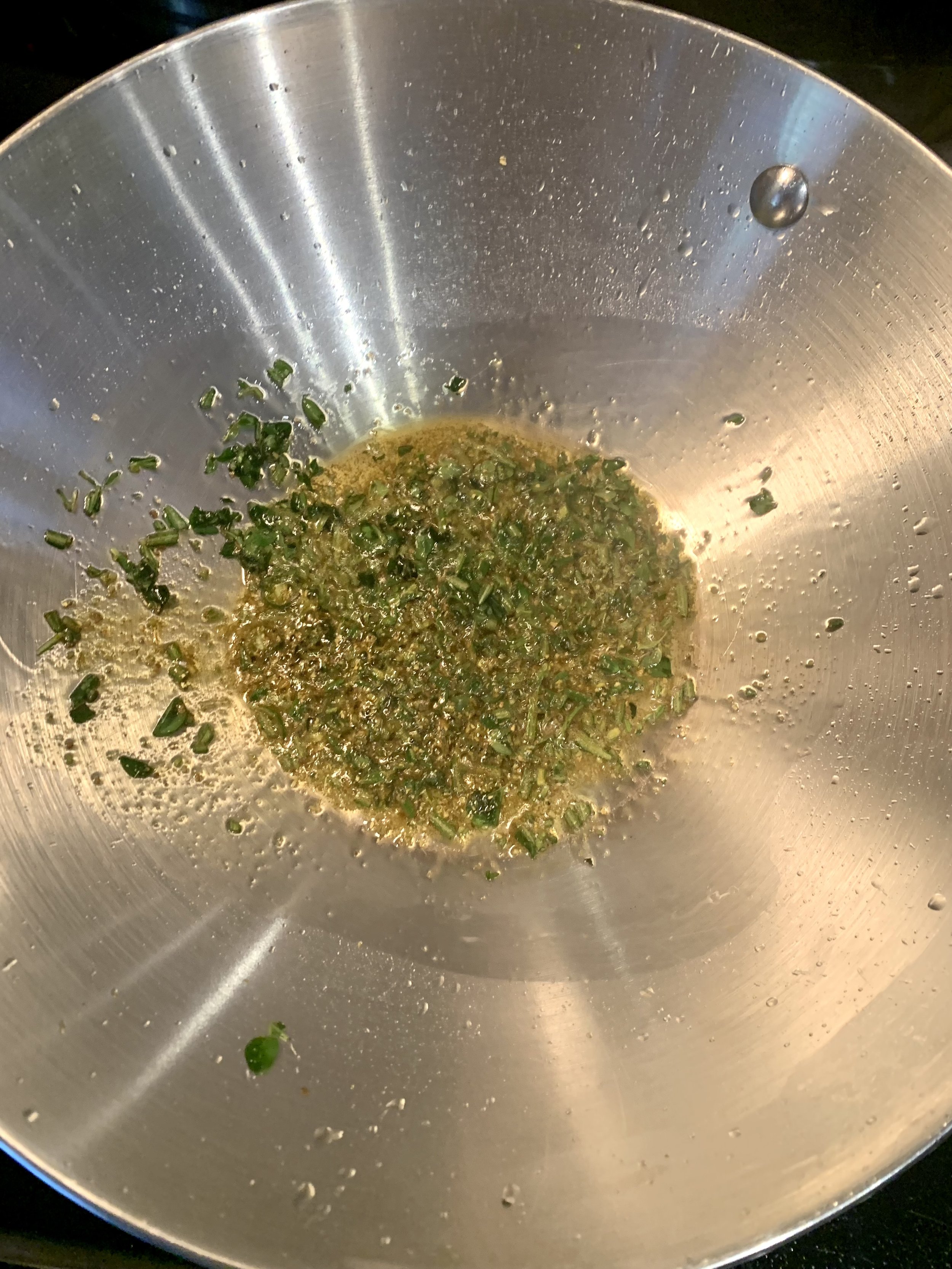

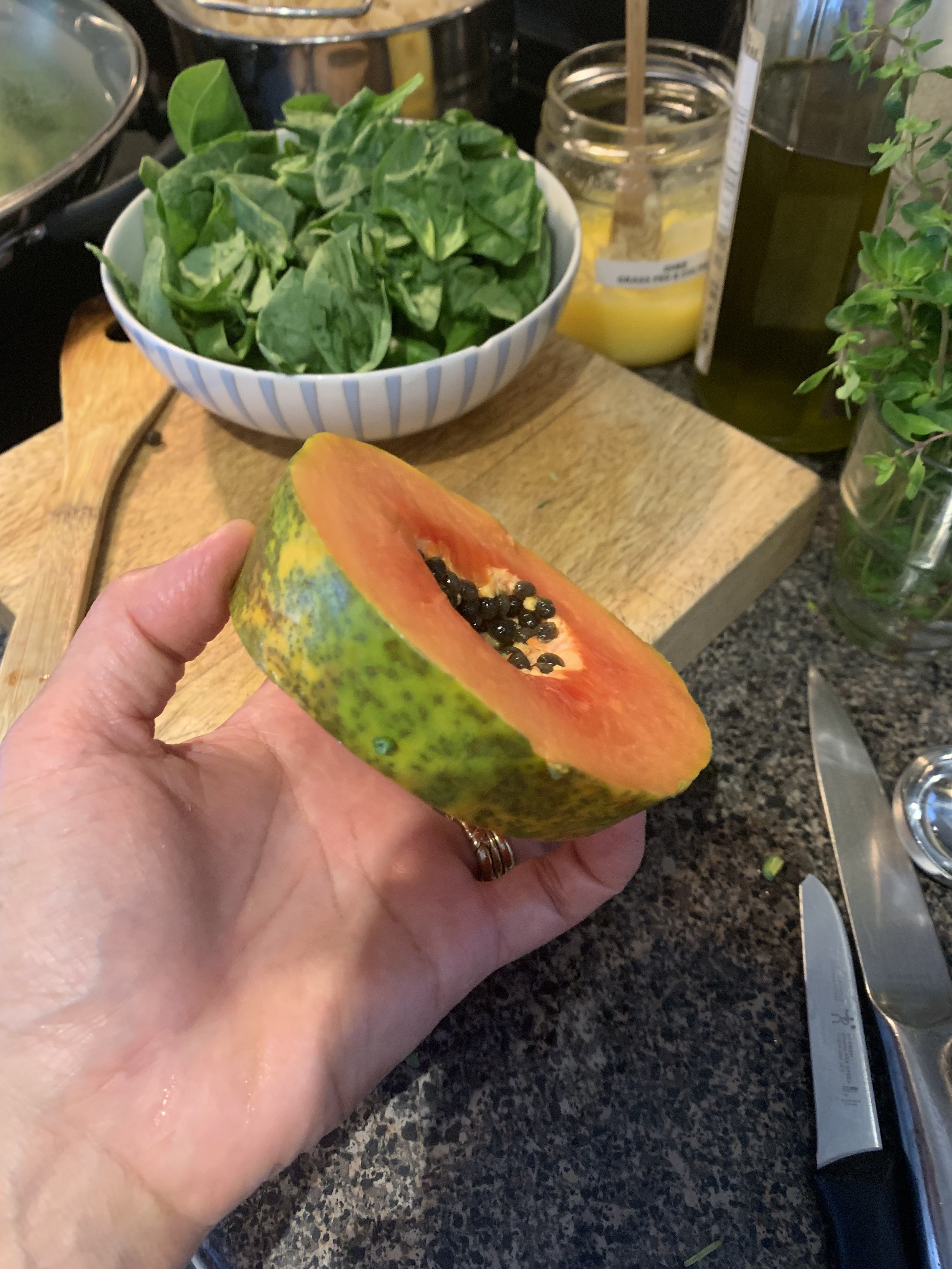
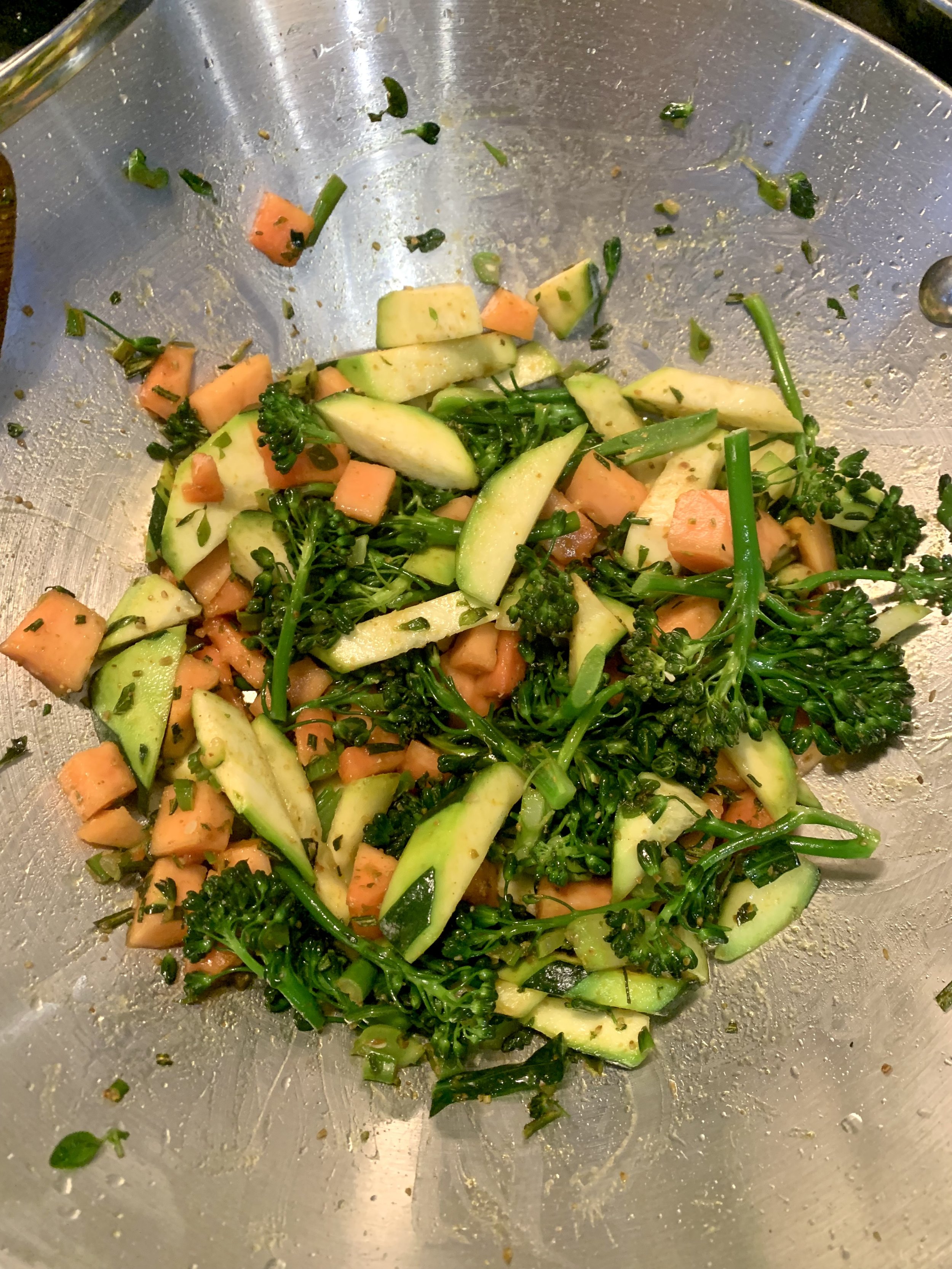
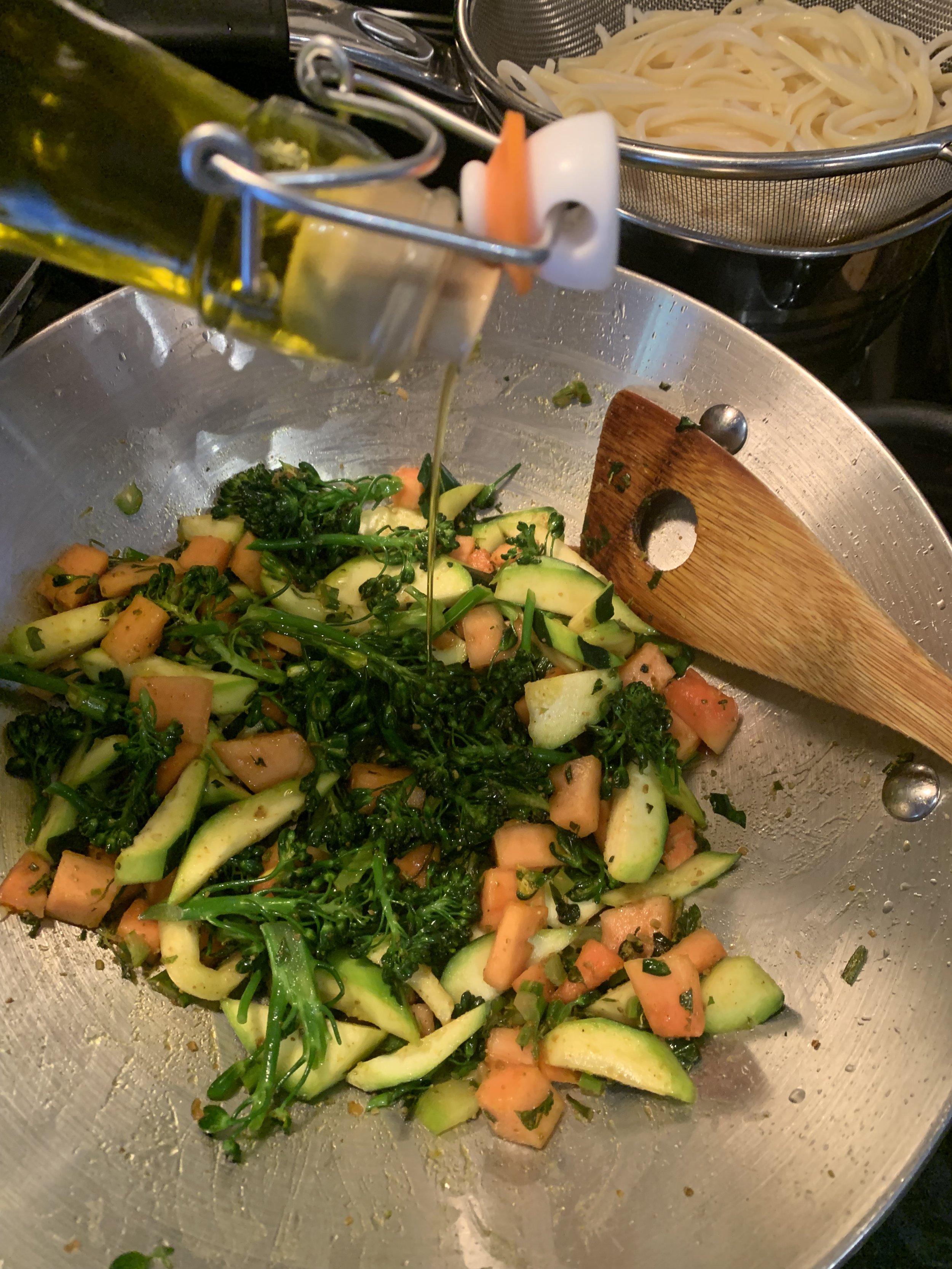

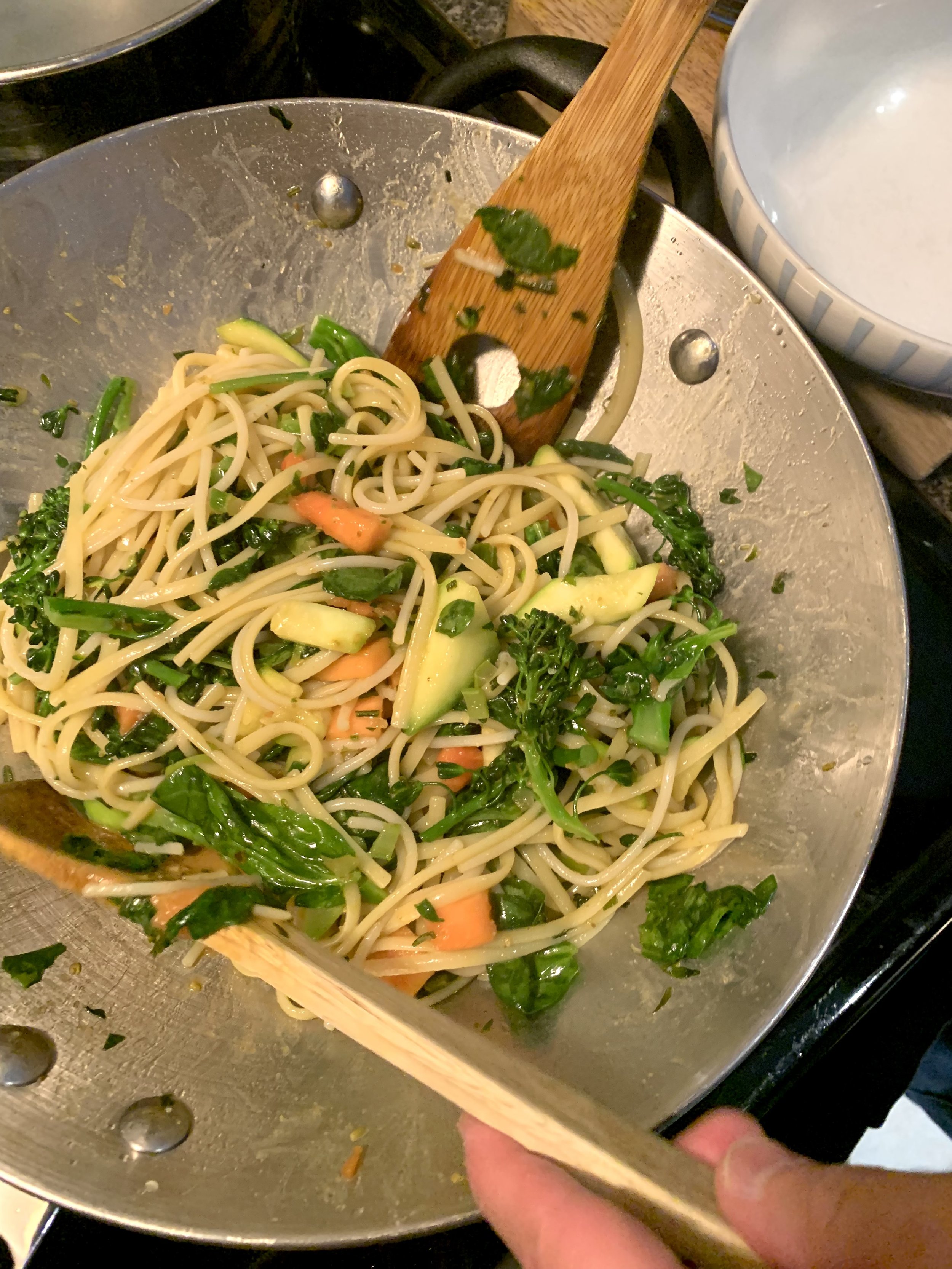
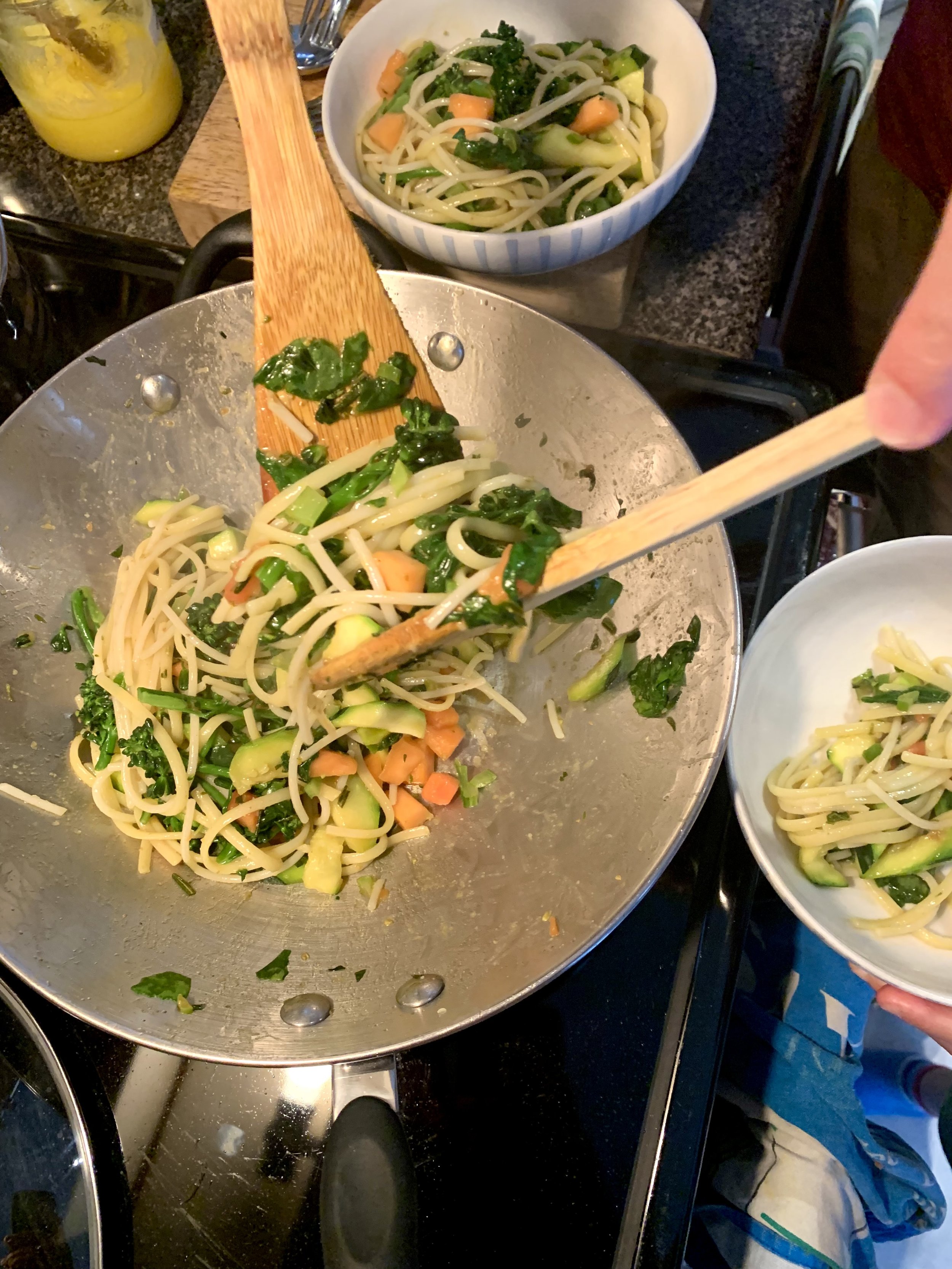
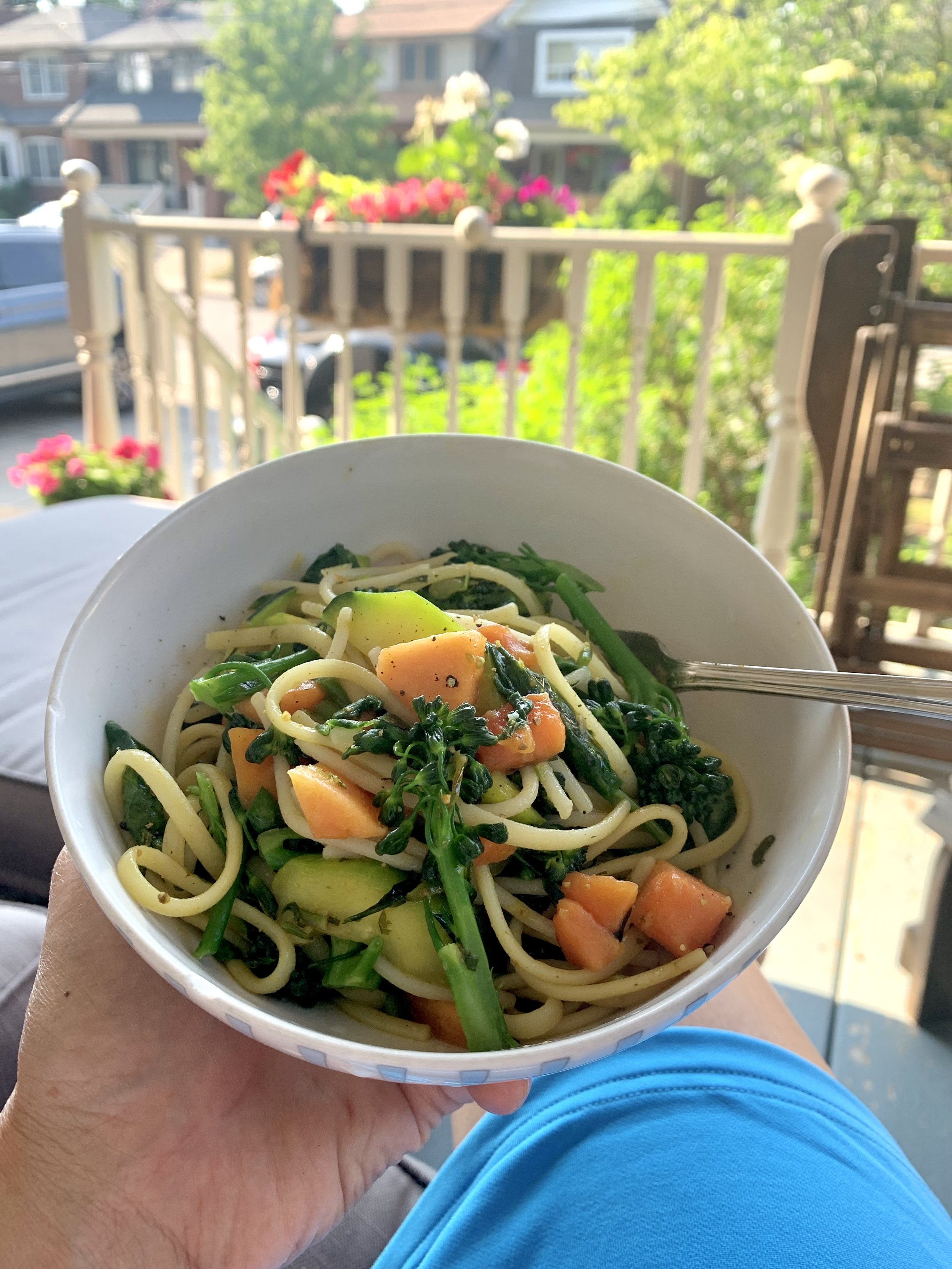
References
Vaidya Mishra - Vaidya R. K. Mishra- Notes from Shaka Vansiya Ayurveda Courses, Practicum, Conferences and Lectures 2003-2015
SV Ayurveda - https://www.svayurveda.com/blog/
Thyme - https://www.ncbi.nlm.nih.gov/pmc/articles/PMC9147557/
Rosemary - https://www.ncbi.nlm.nih.gov/pmc/articles/PMC7491497/

